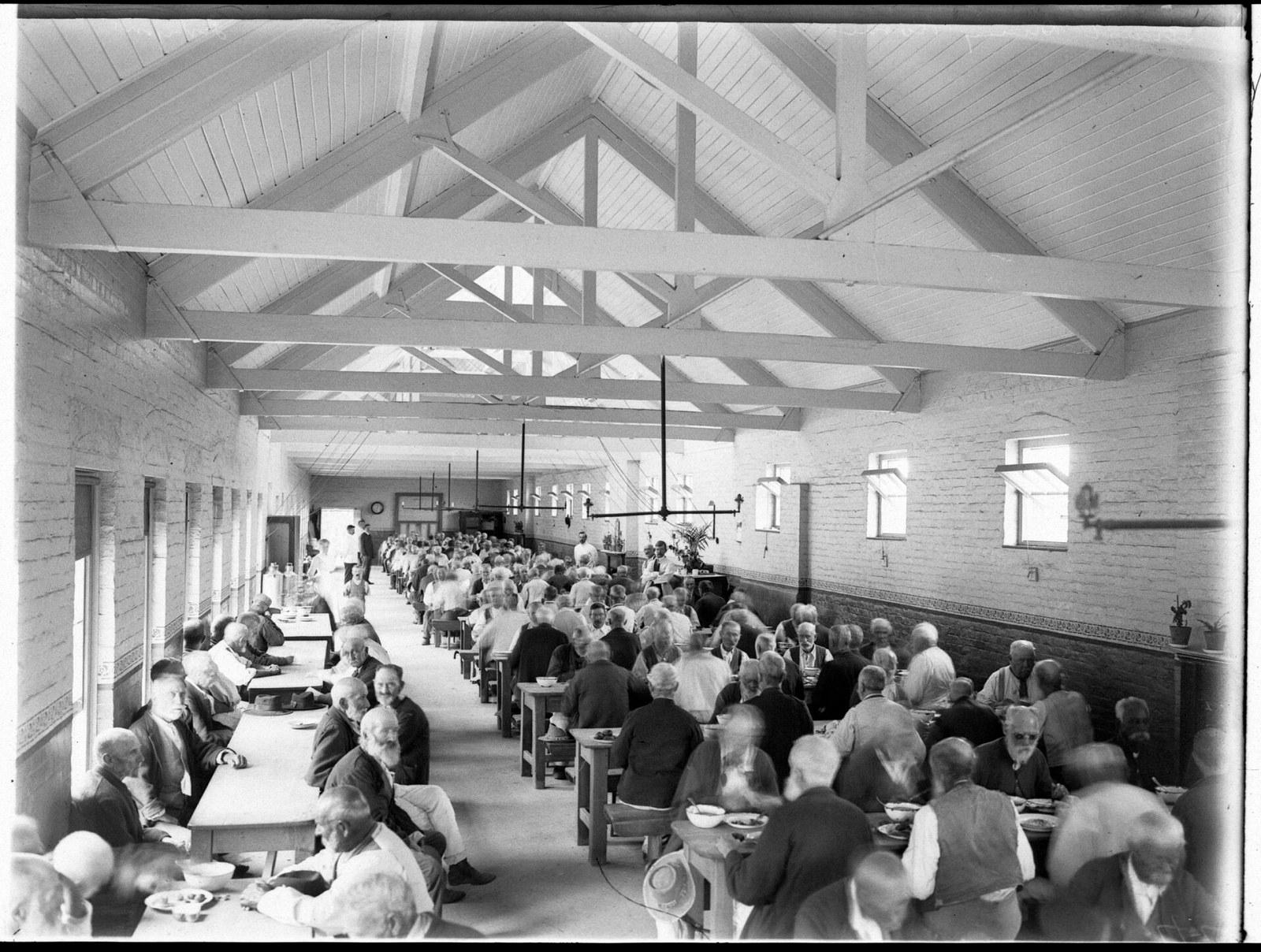Volunteers document Liverpool State Hospital records
Published on Friday 17 May 2024
Our Collections Volunteers (volunteering from home) have successfully listed over 57,000 patient admission cards from from Liverpool State Hospital and Home from around 1884 to 1959.
Liverpool State Hospital and Home was originally established as a branch of the Sydney Benevolent Society in 1851 and provided refuge for infirm and destitute men. In November 2000 the City of Liverpool and District Historical Society returned to the State Archives Collection a number of records from the Liverpool State Hospital and Home that had been in its custody since the closure of the Hospital. As part of this arrangement, all records, including inmate records, created by the Liverpool State Hospital and Home, 1890-1959, are open to public access. (This is an exception to the access direction that closes all patient identifying medical records for 110 years.)
The volunteer project covers the records in two series:
NRS-23159 Admission cards - Deaths [Liverpool State Hospital and Home], 1884-1958
NRS-23160 Admission cards - discharges - [Liverpool State Hospital and Home], 1891-1959
Over 33,400 cards (78% of the series) from NRS-23160 have been digitised and are available to view in the catalogue (type NRS-23160 First name, Last name into the search box to search the records in this series).
Anna Gray, Officer, Collection Digitisation, has been adding the item listings, along with the digital copy of each card, progressively to our website. The entire item list, with images, will be accessible online in the coming months.
Samples from the records
Volunteer Nerida Thiering, who was part of this project, shared remarkable observations as well as a sad story – with a surprising personal connection – that she came across while listing the Liverpool hospital cards.
Reflections on postwar experiences of soldiers at Liverpool State Hospital
Written by Volunteer Nerida Thiering
In mid-2023 I joined the State Archives Collection team as a Collections Volunteer. We have been transcribing records from the Liverpool Hospital admission cards so that they can be indexed for researchers.
I found this a moving experience. The period covered was from just prior to World War I up until the late 1950s. Patterns started quickly to emerge that made me feel that the issue of men’s health in response to war and homelessness needs to be explored. The post–World War I years saw men hospitalised in Liverpool for shellshock, effects of alcohol, general debility, cancers of the stomach, liver and skin, and multiple cases of cancer of the tongue, mouth and jaw. Troops were supplied with rum and cigarettes as they fought in World War I and it is clear that this perpetuated their suffering in the years after the war.
Interesting too was the distance of Liverpool Hospital from the homes of many patients, some of whom stayed there for months or years as they died. This must have made visiting the patients difficult for family and friends.
Post–World War II, many of the patients were of no fixed address, living at the hospital as a poor and destitute person. Occasionally patients ‘absconded’, leaving themselves without medical care. Others were in and out of the hospital over several years until they died. I felt for each person as I entered details of his name, birth date and death date into the index. I felt that this was contributing knowledge of and respect for these men who came before us.
On a personal note, I was touched to see the address of a man who spent eight months in Liverpool Hospital dying of cancer. He and his wife were boarders in a boarding house set up and run by my great-grandparents in The Rocks, Sydney. This man had fought in World War I and was sharing a home with my grandfather and his brother, also World War I veterans. Did they talk about their experiences as a sort of domestic debriefing? Or did they remain silent but deeply understand each other? My great-grandmother died suddenly in the house in 1924 and her boarder died two weeks later at the hospital. The house would have been filled with sorrow after Mary’s death and then the message would have arrived for this man’s wife that her husband had also died. A glimpse into relationships that we would never have known about without these records.
Find out more about volunteering
Related

Liverpool State Hospital & Home guide
Patient records in our collection for Liverpool Asylum for the Infirm and Destitute (1862-1933) and Liverpool State Hospital and Home (1933-1961)

Past event
The records of Liverpool Asylum
This webinar will explore the records of the Liverpool Asylum for the Infirm and Destitute (1862-1933) and was later known as the Liverpool State Hospital and Home (1933-1961)
Friday 22 November 10.30am–11.30am
